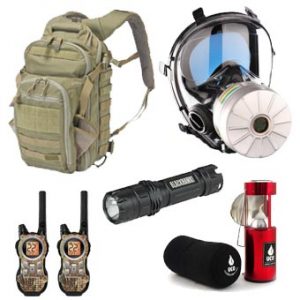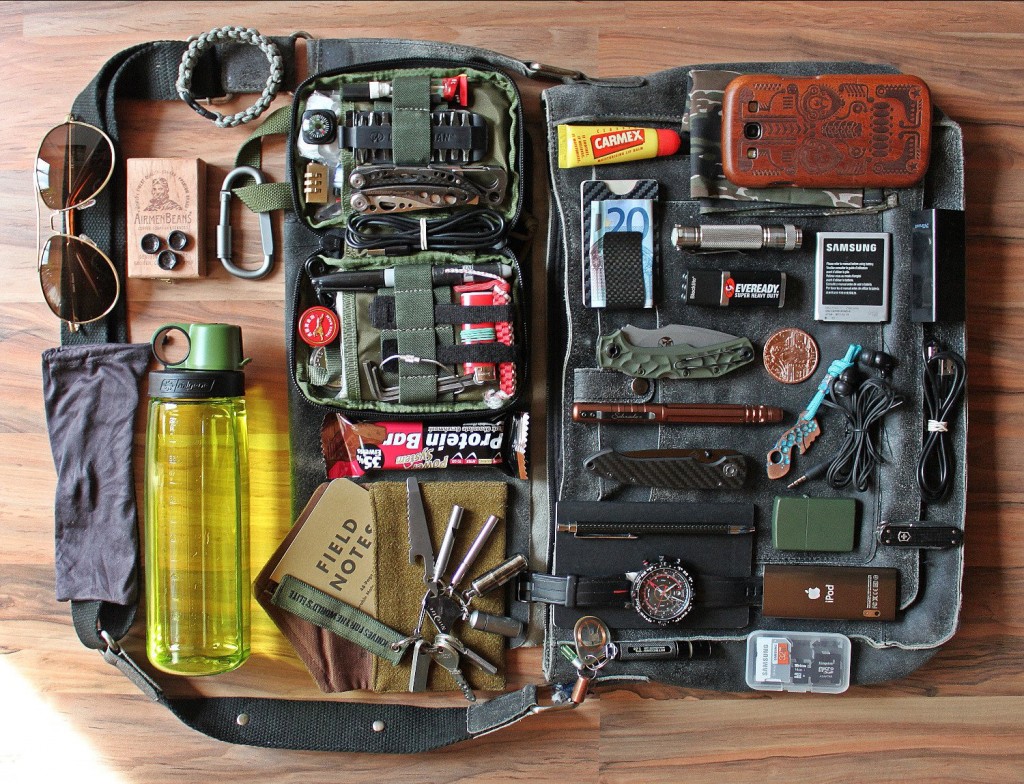Having a survival kit is essential to be prepared in any emergency situation. Whether you’re dealing with a natural disaster, a medical emergency, or some other unexpected event, having a survival kit packed and ready to go can be the difference between life and death. But where should you keep your survival kit? Read on to learn about the best ways to store your essential emergency items.
Where is the best place to put an emergency supply kit?

Having an emergency supply kit is essential for any household. It ensures that you have the necessary items to keep you and your family safe in the event of a natural disaster, medical emergency or other crisis. But where is the best place to keep your emergency supply kit?
The answer to this question depends on several factors, such as the size of your kit and the type of emergency you are preparing for. In general, the most important thing is to ensure that the kit is easily accessible in an emergency.
One option is to keep your emergency supply kit in your home. This is a good choice for smaller kits that can fit in closets, cabinets, or pantries. Make sure you store the kit in an area that is easy to access, such as a hallway or entryway. Additionally, make sure that the kit is out of the reach of children and pets.
For larger kits, you should consider storing them in an off-site location. This can be a storage unit, a neighbor’s garage, or even a friend’s or family member’s house. This will ensure that your supplies remain safe and secure in the event of a disaster.
No matter where you choose to store your emergency supply kit, make sure it is easily accessible and secure. You should also periodically check the supplies to make sure they are not expired or damaged. Finally, make sure everyone in your household knows where the kit is located and what it contains.
Having an emergency supply kit is an important part of any emergency preparedness plan. Make sure that you store your kit in an accessible and secure location, and periodically check the supplies to ensure that they are up-to-date. This will ensure that you and your family have the items you need in the event of an emergency.

The best places to stash your emergency kit
Stocking an emergency kit is an essential part of being prepared for any unexpected situations. Whether you’re at home, at work, or on the road, it’s important to have items such as food and water, a first-aid kit, and other essential items that can help you survive any emergency. But where is the best place to store your emergency kit?
In your car
Your car is one of the most important places to keep a survival kit.
Glove box
One of the best places to keep a survival kit in your car is the glove box. The glove box is usually within easy reach of the driver and provides quick access to the contents of the kit. In addition, the contents of the kit will be protected from the elements when stored in the glove box.
Trunk
The most obvious place to keep your survival kit is in the trunk of your car. This has several advantages. First, it’s out of the way and won’t take up valuable space in your cabin. Second, it’s very accessible in the event of an emergency — you can simply open your trunk and grab your kit.
One downside to keeping your survival kit in the trunk is that if you have to leave your car in a hurry (for example, if you’re fleeing a wildfire), you may not have time to grab your kit. So, it’s important to also keep a smaller, more compact version of your kit in the cabin of your car. This could include items like a flashlight, multi-tool, first-aid kit, and so on.
At home

A good place to start is by keeping a small kit at home that contains the basics like water, food, and a first-aid kit. This way, you and your family will be prepared in the event of an emergency.
Kitchen
Your kitchen is full of items that can be used in a survival situation. Canned goods, non-perishable food items, and even your stove can be used to help you survive.
Your kitchen should be one of the first places you go when thinking about where to put your survival kit. It’s full of items that can be used in a pinch, like canned goods, non-perishable food items, and even your stove. If you have a small kitchen, or if you want to keep your kit out of the way, consider putting it under the sink or in a cabinet. You should also make sure that everyone in your household knows where the kit is so they can grab it in an emergency.
Basement
While your first instinct might be to store your emergency kit in the basement, this isn’t always the best idea. If your basement is prone to flooding or you live in an area with high water tables, it’s best to find another storage spot. The same goes for storing your kit in a garage — if there’s a chance that floodwaters could rise high enough to reach your garage, it’s not the safest option.
Garage
The garage is a great place to store your survival kit because it’s out of the way and usually has enough space to accommodate a large kit. You can also keep other supplies in the garage, such as tools, garden equipment, and sports equipment.
Outdoors
Your kit should be easily accessible and well organized. It should be stored in a watertight container, such as a backpack, and kept in a cool, dry place.
Hiking
Hiking is a great way to get outdoors and enjoy the beauty of nature. There are many different types of hikes, from short day hikes to multi-day backpacking trips. Whether you’re a beginner or an experienced hiker, there are plenty of trails to explore.
Before you hit the trail, it’s important to be prepared. Make sure you have the proper clothing and equipment, and that you know the level of difficulty of the hike you’re planning. Once you’re on the trail, be sure to stay on marked paths and obey all posted signs. And finally, always hike with a partner – it’s safer and more fun!
Camping
Camping is a great way to enjoy the outdoors, but it’s important to be prepared. A survival kit can help you stay safe and comfortable in case of an emergency.
Your survival kit should include:
-A map of the area
-A compass
-A flashlight
-A first aid kit
-A whistle
-A mirror
-Cordage (rope or parachute cord)
-A knife or multi-tool
-Firestarter materials (lighter, matches, flint, and steel)
-Signal flares
-An emergency blanket or bivy sack
Hunting
Hunting is the practice of killing or trapping animals or pursuing or tracking them with the intent of doing so. Hunting wildlife or feral animals is most commonly done by humans for food, recreation, to remove predators that can be dangerous to humans or domestic animals, or for trade. Many animal species have been hunted throughout history.

Tips for storing emergency supplies at home
Storing emergency supplies at home is an important part of preparing for any potential disaster. If a disaster hits your area, having the right supplies can make all the difference in keeping you and your family safe. Here are some tips for storing emergency supplies at home.
Start with a plan. Before you even start stocking your emergency supplies, it’s important to have a plan. Create a list of essential items that you should have on hand for any disaster. Think about basic needs such as food, water, first aid supplies, and any other items that you think are necessary. This list will help you determine the types of supplies you need and how much of each you should store.
Choose a storage space. Once you have a plan of the types of supplies you need, it’s time to decide where you will store them. Choose a space in your home that will be easily accessible, such as a closet or basement. Make sure the space is free of water and pests and will remain dry and cool.
Organize your supplies. Once you have determined a space to store your supplies, organize them in a way that makes sense. Group supplies by type, such as food, water, first aid, and other items. This will make it easier to find the items you need in an emergency.
Rotate your supplies. Most emergency supplies have expiration dates and need to be replaced periodically. To make sure your supplies are always up to date, set a reminder to rotate your supplies every so often. This will ensure that you always have the items you need and that they are in good condition.
Label clearly. Labeling your supplies is also a great way to keep track of them. Use clear labels or write directly on the containers to make sure you know what is inside. This will help you find the items you need quickly and easily in an emergency.
Storing emergency supplies at home can seem like a daunting task. But with a plan, the right space, and some organization, you can create a comprehensive emergency supply list that will be ready to use in case of an emergency.
